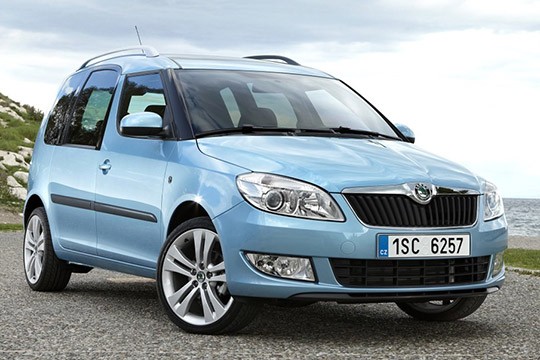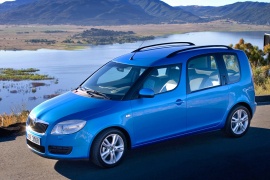SKODA Roomster Models/Series Timeline, Specifications & Photos
First production year: 2006
Engines: Gasoline, Diesel
Body style: Van
With the world financial crisis almost gone, the Czech automaker hoped it could revive the Roomster's sales and give it a well-deserved facelift that was unveiled at the 2010 Geneva Motor Show.
Skoda tried harder to impose its small-sized MPV on the European market with upgraded powertrains and minor styling updates added to the Roomster lineup. Moreover, it also offered it as an LCV with two doors, trying to get a slice of that market segment as well. Yet, its efforts were in vain, and after five more years, the project was ditched.
The Czech automaker didn't make significant changes to the vehicle in terms of costs. Still, it refreshed some areas that were more visible to customers. Thus, the front fascia received improved headlights with lenses on the outer lamps. In addition, the grille was more expansive, and the bumper had a new lower air intake. The optional fog lamps were also larger than on the pre-facelifted version. At the back, the automaker installed new taillights surrounded by a chromed trim.
Inside, the main visible difference was noticed on the steering wheel, which sported a revised design. In addition, on the center stack, the automaker installed new options for the sound system. But these were not the main attributes of the Roomster; it was its loading capacity. With the rear seats removed, it boasted up to 1,810 liters (63.9 cu-ft) of space.
Under the hood, the former 1.4- and 1.6-liter gasoline engines were replaced by a new 1.2-liter unit that was offered with or without a turbocharger. In addition, Skoda offered a choice of three turbo-diesel powerplants. Another essential upgrade was on the transmission, where the carmaker replaced the formerly used Aisin gearbox with a seven-speed automatic (dual-clutch) unit.
The Czech automaker tried to expand its range with the introduction of a small-sized MPV based on the same platform as the Fabia lineup.
Even though the European MPV market was declining, Skoda thought that it might get a better chance than most of its competitors with the Roomster. Since the car was based on a small-sized vehicle platform, its price was very attractive. At the same time, it offered enough features and amenities to attract customers from the compact segment. But when the financial crisis struck in 2008, the Roomster's sales plummeted.
The idea was not new, and it proved successful for other vehicles, such as the Yaris Verso from Toyota or the Kangoo from Renault. So, with the Roomster, Skoda put together a front fascia carried over from the Fabia, followed by a tall greenhouse with wide windows. The rear doors' handles were concealed into the B-pillars. At the back, the vertical tailgate was broad and flanked by taillights.
Inside, the Roomster proved its name since it offered plenty of space for up to five adults. Moreover, the automaker provided the vehicle with an option for a panoramic glass roof that further enhanced the airy feeling of the cabin. In the back, Skoda installed either a two-seat or a bench seat for three. Both versions were flat folding so they could expand the loading area.
Under the hood, the automaker installed a wide choice of gasoline or turbo-diesel engines ranging from 63 hp (64 PS) to 103 hp (105 PS). Power went to the front wheels only via either a five- or six-speed manual or a six-speed automatic provided by Aisin.

